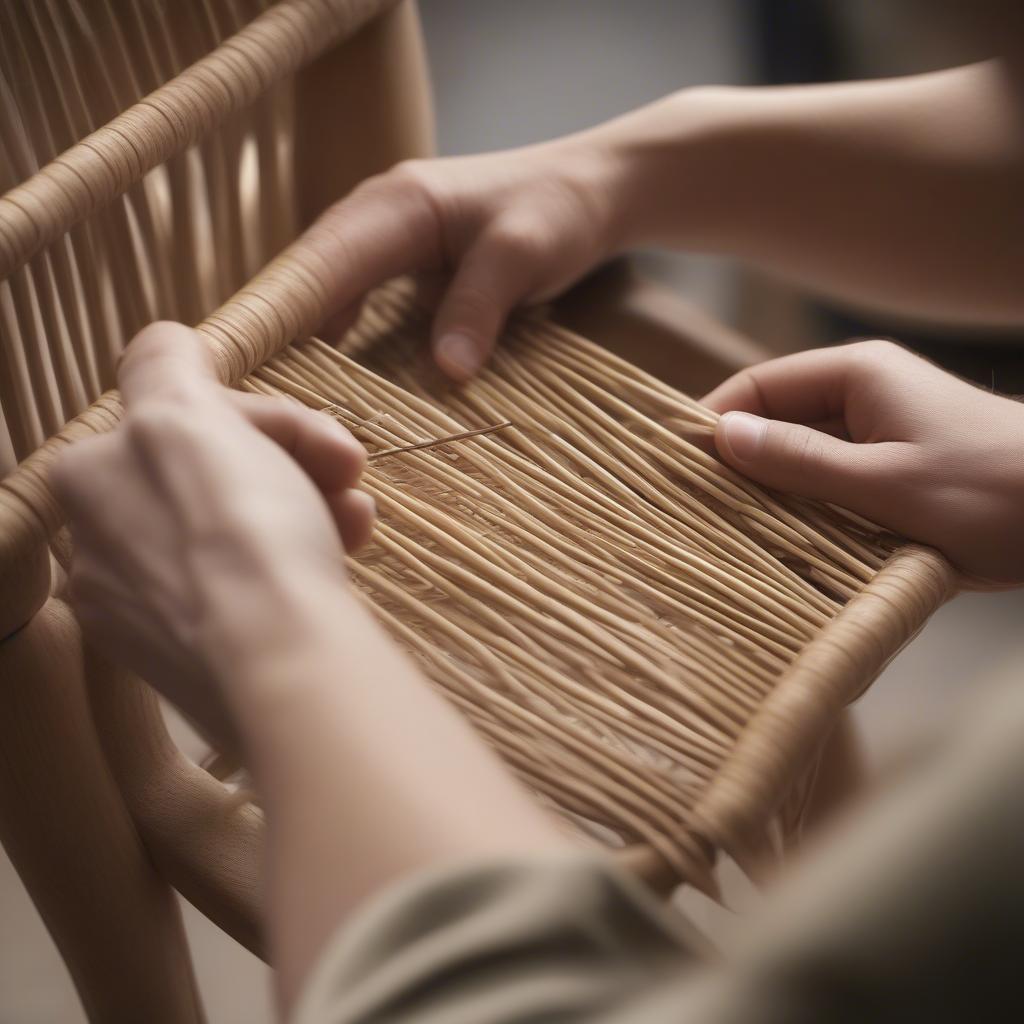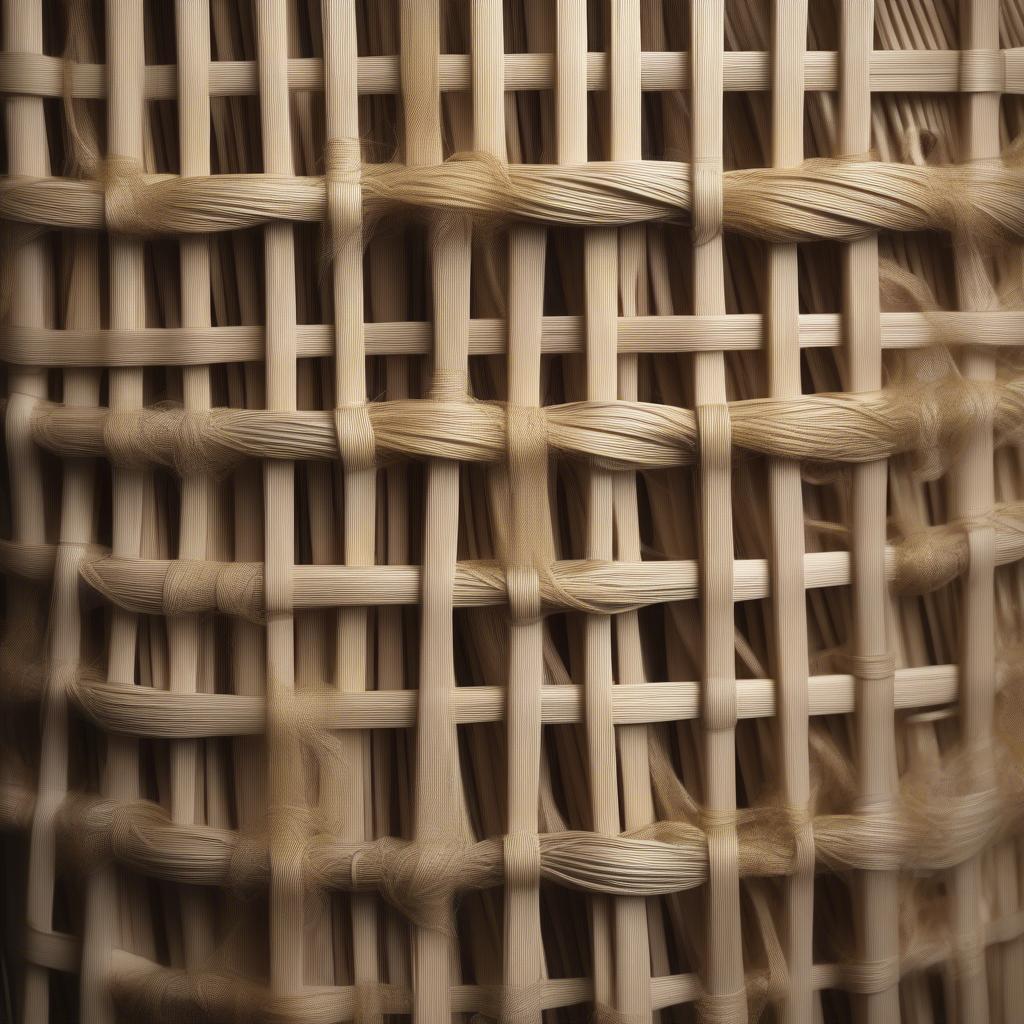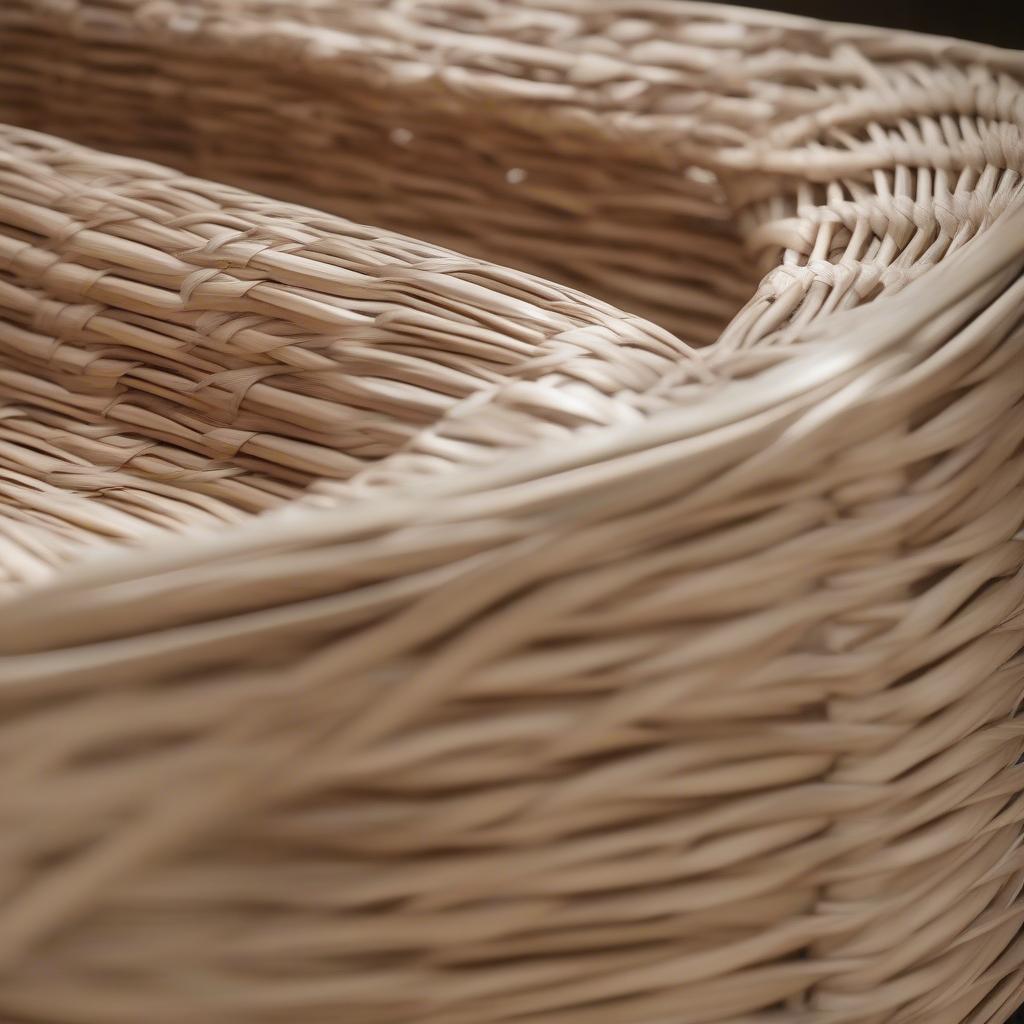Weave Chair
How to Weave a Chair Seat with Reed
Learning How To Weave A Chair Seat With Reed can transform a worn-out piece of furniture into a beautiful and functional work of art. This comprehensive guide will provide you with the necessary steps and techniques to master this traditional craft. We’ll cover everything from selecting the right reed to the final finishing touches, empowering you to confidently tackle your next chair seat weaving project.
 Weaving a chair seat with natural reed, showing the process of threading the reed through the chair frame.
Weaving a chair seat with natural reed, showing the process of threading the reed through the chair frame.
Gathering Your Materials and Preparing the Chair Frame
Before you begin how to weave a chair seat with reed, gather your supplies. You’ll need reed, a sturdy chair frame, a sharp knife or reed splitter, a measuring tape, and a container of water to soak the reed. Soaking the reed for about 30 minutes makes it pliable and easier to work with, preventing breakage. Next, examine the chair frame. Ensure it is clean and free of any loose debris or old weaving material. Any remaining old reed can interfere with the new weaving, so thorough cleaning is crucial. how to weave a chair seat with flat reed provides more detailed information on preparing different types of reed.
Weaving the Seat: A Step-by-Step Guide
Now, let’s dive into the actual weaving process.
-
Starting the Warp: Begin by weaving the vertical strands of reed (the warp) across the chair frame. Securely attach the end of the reed to one side of the frame and then run it across to the opposite side, pulling it taut. Continue this process until you have created a parallel series of warp strands across the entire frame. The spacing between the warp strands should be even and consistent.
-
Introducing the Weft: Once the warp is complete, begin weaving the horizontal strands of reed (the weft) over and under the warp strands. Start at one edge of the frame and work your way across, ensuring each weft strand is snug against the previous one.
-
Maintaining Consistent Tension: Maintaining even tension throughout the weaving process is critical for a strong and beautiful finished product. Pulling the weft too tight can distort the frame, while leaving it too loose will result in a saggy seat.
-
Building the Pattern: As you weave, you’ll gradually build up the pattern of the chair seat. Simple over-under weaving creates a classic look, but more intricate patterns can be achieved with variations in the weaving technique.
 Close-up view of the hands weaving reed to create a pattern on a chair seat.
Close-up view of the hands weaving reed to create a pattern on a chair seat.
How Do You Weave a Chair Seat with Different Reed Types?
Different types of reed require slightly different approaches. Flat reed is commonly used and provides a smooth, even surface. Round reed creates a more textured finish. how do you weave a chair explains the nuances of working with different reed varieties.
“Choosing the right reed is paramount,” says renowned basket weaver, Amelia Reedcraft. “Understanding its characteristics will significantly impact the final aesthetic and durability of your woven chair seat.”
Finishing Touches and Troubleshooting
Once the weaving is complete, trim any excess reed and secure the ends to the frame. You can also apply a sealant or varnish to protect the reed and enhance its longevity. paper rush chair weaving explores other materials you can use for chair seat weaving. If you encounter any broken reed during the process, simply weave in a new strand and continue.
“Don’t be afraid to experiment with different patterns and techniques,” encourages Amelia. “The beauty of chair seat weaving lies in its versatility and potential for creative expression.”
 A completed woven chair seat made of reed, showcasing the finished product.
A completed woven chair seat made of reed, showcasing the finished product.
Conclusion
Learning how to weave a chair seat with reed is a rewarding experience that combines traditional craftsmanship with artistic expression. By following these steps and practicing your technique, you can create beautiful and functional chair seats that will last for years to come. lawn chair weaving can be your next project once you master this technique.
FAQ
-
How long does it take to weave a chair seat? The time varies depending on the size of the chair and the complexity of the pattern.
-
What type of reed is best for beginners? Flat reed is generally easier to work with for beginners.
-
Can I weave a chair seat with other materials besides reed? Yes, materials like paper rush and seagrass can also be used.
-
Where can I buy reed for chair seat weaving? Reed can be purchased online or at craft supply stores.
-
How do I fix a broken reed in the middle of my weaving? Simply weave in a new strand and continue.
-
What is the best way to maintain a woven chair seat? Regular dusting and occasional cleaning with a damp cloth will help preserve its beauty.
-
How much reed do I need for a standard chair seat? how much reed to weave a chair provides a helpful guide for estimating reed quantities.
For further assistance, contact our 24/7 customer service at +84 388 951 999 or visit us at Hanoi, Vietnam or Tech Avenue, Suite 12, San Francisco, CA 94105, USA.
